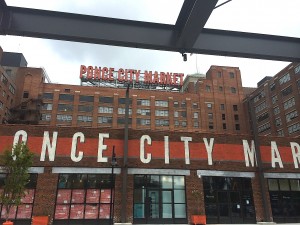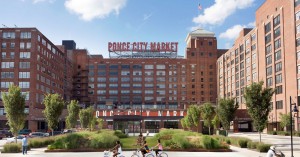Exclusivity and Ponce City Market
By Julia Zimmerman
Ponce City Market’s Implications on Varying Socioeconomic Classes:
With over a million square feet of retail and residential space, Ponce City Market is rapidly becoming Atlanta’s most prominent hub for economic consumption. Fancy boutiques, elegant restaurants, and innovative businesses all located within the same establishment sound convenient. But what implications ensue? Are marginalized groups at the expense of luxury retail? Ponce City Market and its surrounding communities have been influenced by political, economic, and social factors. With the association between political leaders, urban planners, and residents, endeavors have been conducted to revitalize the city of Atlanta. This democratic process has its benefits in redeveloping obsolete properties for renewed use, although disadvantages can also occur that perpetuate the isolation of particular groups. Ponce City Market has not allowed equal opportunities for lower-income families to participate in the market’s activity which results in the exclusivity of particular socioeconomic groups. The intentions of city developers may not be malicious, but the market has alienated poorer classes from engaging in its economic, social, and communal benefits. The influences of their marginalization must be regarded when examining the market’s consequences on urban landscape.
Factors of Exclusivity:
Ponce City Market’s Exclusivity:
As exhibited by retail, business, parking, housing, and adjoining neighborhoods, lower-classes have increasingly become excluded by the establishment of Ponce City Market. Though Gravel has expressed interest in providing equal housing opportunities for all incomes within Atlanta, the reality does not mirror his intentions. Unfortunately, the market predominantly targets wealthier individuals which consequently alienates lower-income families from fully participating within the market’s realm. Lower classes do not have the resources to involve themselves in the social landscape of Atlanta unlike their counterparts. However, residents can stop this marginalization at the local level. Exercising democracy such as communicating to local city planners, developers, and politicians brings awareness to the implications that Ponce City Market presents. Modern, mixed-use developments seem ideal within the constantly-evolving city of Atlanta, though it is imperative to acknowledge the consequences inflicted upon citizens. As a community, we cannot tolerate construction to occur at the expense of marginalized groups; exclusivity will not define Atlanta. Instead, Ponce City should extend to broader demographics – inclusive, accepting, celebrating. Let’s end the disparity between socioeconomic groups within the social landscape of Atlanta.
Sources:

